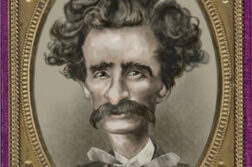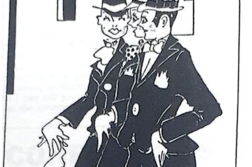“In Spain, the dead are more alive than the dead of any other country in the world.” — Federico García Lorca
FROM WHERE I SIT on my terrace in the Barcelona neighborhood of Poble Sec, once made up of working-class Catalans but now primarily immigrants, I gaze over the roofs of the apartment buildings to the lush green mountaintop of Montjuic. So little is lush in Barcelona this spring after an extremely dry winter—global warming is pushing the North Africa desert climate slowly upwards into Iberia—but Montjuic is still a bright green oasis, its acres of parks and forests making it the largest green zone in the city, made even more so by the monk parrots building their nests in the palm trees.
After six months in Catalonia during the Spanish Civil War, George Orwell warned (in 1938’s Homage to Catalonia): “It is difficult to be certain about anything except what you have seen with your own eyes.” But if you’re a foreigner in Spain, it’s tricky to know if you truly understand, or only think you understand, what you’re seeing with your own eyes. I used to sit and watch these beautiful birds with awe from an outdoor café until I learned that they’re an aggressive, invasive species, doing damage to the local ecosystem.
Montjuic means “Jewish mountain” in medieval Catalan. A sizeable Jewish community once lived peacefully in the Call ghetto until the 14th century, when rising anti-Semitism culminated in the riots of 1391. That year the Jews of Barcelona were murdered, forcibly converted, or driven out of the city by mobs egged on by the Catholic Church, a full century before the Spanish Inquisition. An ancient Jewish cemetery dating from before their expulsion is hiding somewhere on the mountain, so disguised by time that I have never found it, despite my wanderings on Sunday afternoons. As with so much of Spain’s elusive past, it seems to have been swallowed up by the dry earth.






